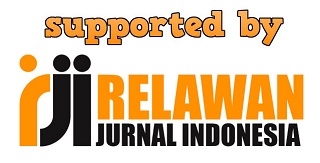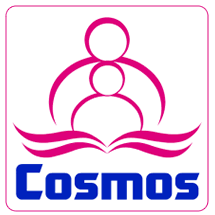The Students’ Preference on Online Learning Platform for English Writing Skills
DOI:
https://doi.org/10.61672/eji.v8i2.2793Keywords:
Online learning platforms, Students’ preference, Writing skills, English writing skillsAbstract
The technological development has influenced the educational aspect in supporting the teaching and learning process that can be run online. Online learning has been started commonly used for teaching English. This process is also facilitated by the existence of the online platforms. The teachers need to know the students’ preference towards the online platforms in order to achieve effective and efficient online learning. It has evolved into the indicator for evaluating the online learning for teaching English writing skills. Thus, the schools and the teachers can determine which online platforms are appropriate to use on the students. Thus, this research aimed to find out the students’ preference on online learning platforms for English writing skills in Senior High School 1 Bagan Sinembah. The criterions are language learning potential, meaning focus, learner fit, authenticity, positive impact and practicality. This is descriptive studies with detail analysis of students’ preference on online platforms like Zoom, E-learning, WhatsApp (WA) and Schoology. E-questionnaire was distributed to the students for collecting the data. E-learning obtained the highest percentage from natural science students with 74,0% and WhatsApp got the highest percentage from social science students with 68,3% as the suitable online platform for English writing skills for the students to learn and improve their writing skill when using the tools of those platforms. Therefore, it can be concluded that the students had different preferences in choosing the online platform for learning English writing skills. This preference leads us to believe that the online platforms can give the benefit of the students’ writing skill. It can be as the consideration for the teacher and decision-maker at school to choose the appropriate platform for students to be used.
References
Alqahtani, S. M., Bhaskar, C. V., Vadakalur Elumalai, K., & Abumelha, M. (2018). WhatsApp: An online platform for university-level English language education. Arab World English Journal (AWEJ), 9.
Amin, F. M., & Sundari, H. (2020). EFL students’ preferences on digital platforms during emergency remote teaching: Video Conference, LMS, or Messenger Application?. Studies in English Language and Education, 7(2), 362-378.
Bates, A. W. (2015). Teaching in Digital Era. Vancouver, Bc: tony bates associates ltd
Braine, G., & Yorozu, M. (1998). Local area network (LAN) computers in ESL and EFL writing classes: Promises and realities. JALT Journal, 20(2), 47-59.
Cahyono, Y. D. (2015). E-Learning (Edmodo) Sebagai Media Pembelajaran Sejarah. Jurnal Penelitian, 18(2).
Framework for 21st Century Learning. (2009). Retrieved from http://www.p21.org/ourwork/p21-framework
Friatin, L. Y. (2018). Students’ perception on teaching writing through facebook group in EFL class. Journal for Language and Foreign Language Learning, 7(1), 55-76.
Gomez, P. (2016). Students’ perceptions of blog use in an undergraduate linguistics course. Journal of Language and Linguistic studies, 12(1), 9-19.
Graham, S. and D. Perin. 2007. Writing next: Effective strategies to improve writing of dolescent in middle and high schools - A report to Carnegie Corporation of New York. Washington DC: Alliance for Excellent Education.
Hafsah, N. R., Rohendi, D., & Purnawan, P. (2016). Penerapan media pembelajaran modul elektronik untuk meningkatkan hasil belajar siswa pada mata pelajaran teknologi mekanik. Journal of Mechanical Engineering Education, 3(1), 106-112.
Jamieson, J., Chapelle, C., & Preiss, S. (2013). CALL evaluation by developers, a teacher, and students. CALICO Journal, 23(1), 93-138
Jena, P. K. (2020). Online Learning During Lockdown Period For Covid-19 In India. Editorial Board, 9(5), 82.
Jamieson, J., Chapelle, C., & Preiss, S. (2013). CALL evaluation by developers, a teacher, and students. CALICO Journal, 23(1), 93-138
Johnson, K. & Manning, S. (2010). Online education for dummies. Canada: John Wiley & Sons Publishing ISBN 0470536209
Kobayashi, M. (2017). Students’ media preferences in online learning. Turkish Online Journal of Distance Education, 18(3), 4-15.
Koç, R. A. T., Koç, M., & Kıymaz, M. (2016). Undergraduate Students’perceptions About Blended Education: A Qualitative Approach. Journal of Educational & Instructional Studies in the World, 6(2).
Liaw, S. S., Huang, H. M., & Chen, G. D. (2007). Surveying instructor and learner attitudes toward e-learning. Computers & education, 49(4), 1066-1080.
Liu, Y., & Wang, H. (2009). A comparative study on e-learning technologies and products: from the East to the West. Systems Research & Behavioral Science, 26(2), 191–209.
Munawaroh, S. (2016). Classroom interaction in teaching English using Quipper School at Vocational High School 2 Buduran Sidoarjo (Doctoral dissertation, UIN Sunan Ampel Surabaya).
Raja, R & C. Nagasubramani, P 2018 Impact of modern technology in education. Journal of Applied and Advanced Research, 3(1), 33−35
Reyes-Chua, E., Sibbaluca, B. G., Miranda, R. D., Palmario, G. B., Moreno, R. P., & Solon, J. P. T. (2020). The status of the implementation of the e-learning classroom in selected higher education institutions in region IV-A amidst the covid-19 crisis. Journal of Critical Reviews, 7(11), 253-258.
Richard,H., & Haya, A. (2009).Examining student decision to adopt web 2.0 technologies: theory and empirical tests. Journal of computing in higher education, 21(3), 183-198.
Salam, U. (2020). The Students’ Use of Google Classroom in Learning
English. JPI (Jurnal Pendidikan Indonesia), 9(4), 628-638.
Soh, Y. C., Zhang, C., Zhao, P., Hao, S., Lee, B. S., Miao, C., & Hoi, S. C. (2018). Distributed multi-task classification: A decentralized online learning approach. Machine Learning, 107, 727-747.
Sugiyono. 2008. Metode Penelitian PendidikanPendekatan Kuantitatif dan R&D. Bandung: Alfabeta
Suherdi, D. (2012). Towards the 21st century English teacher education: An Indonesian perspective. Bandung: Celtic Press.
Veerakumar, K., Gnanaselvi, G., & Srinivas, K. (2020). A study on student’s
preference towards online education during COVID-19 pandemic
period. Intl. J. Disaster Recovery and Busi. Continuity, 11(3), 968-976.
Downloads
Published
Issue
Section
License
Copyright (c) 2024 Aulia Andhini, Annisa Tasyakurna, Egi Raputri

This work is licensed under a Creative Commons Attribution 4.0 International License.




















